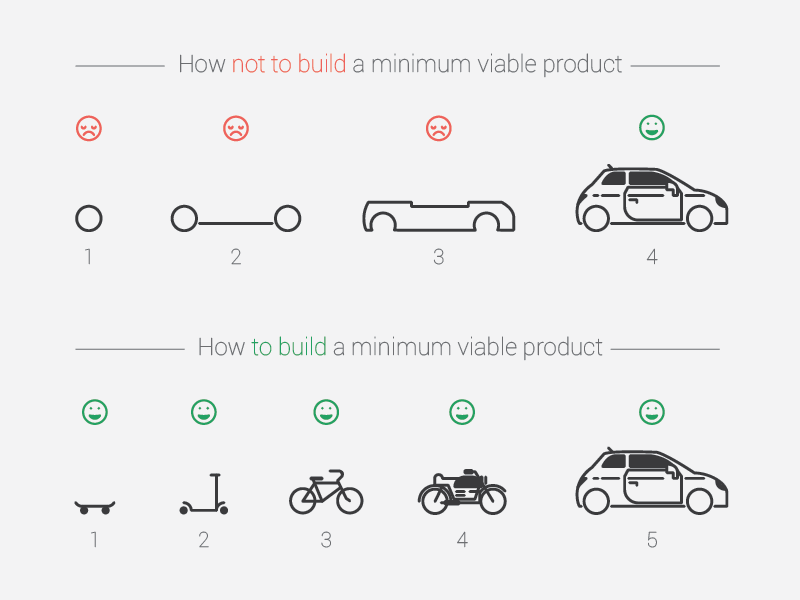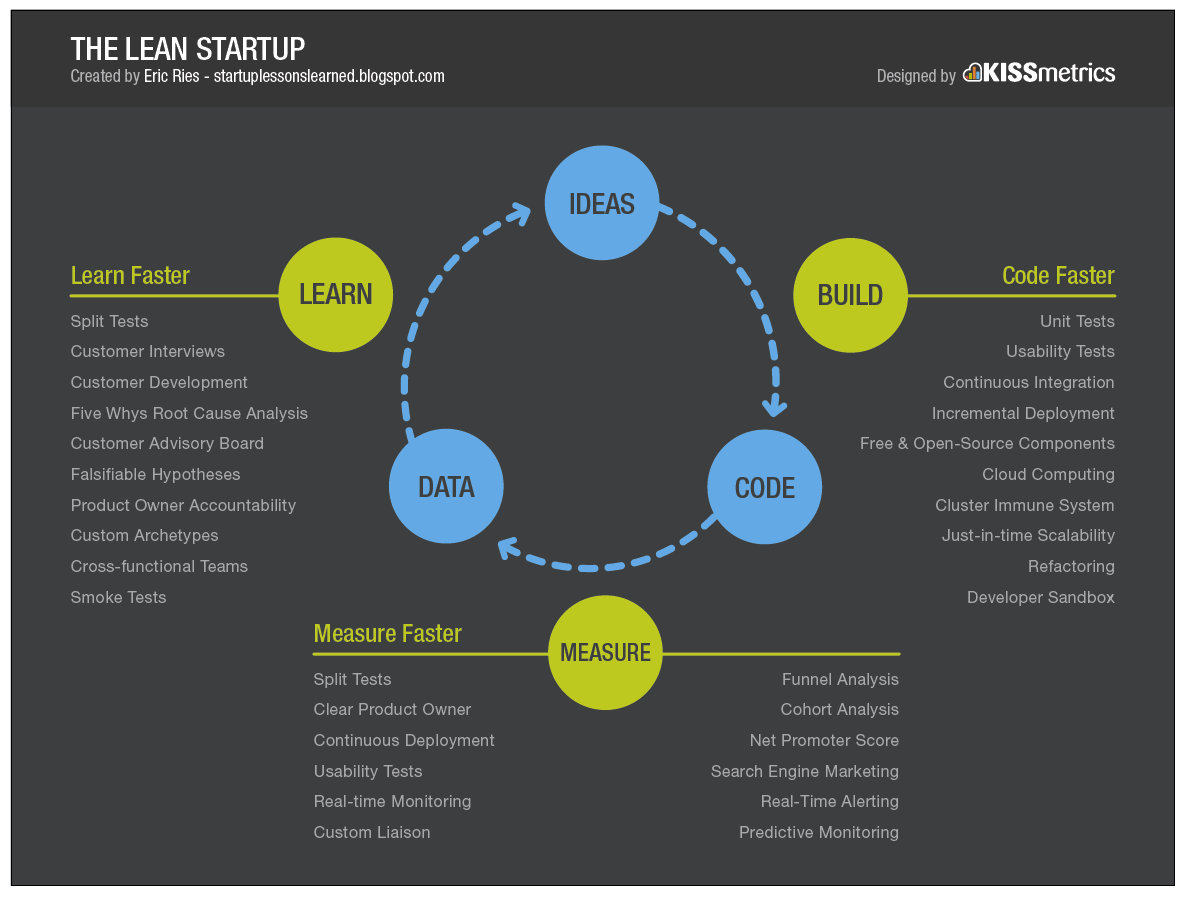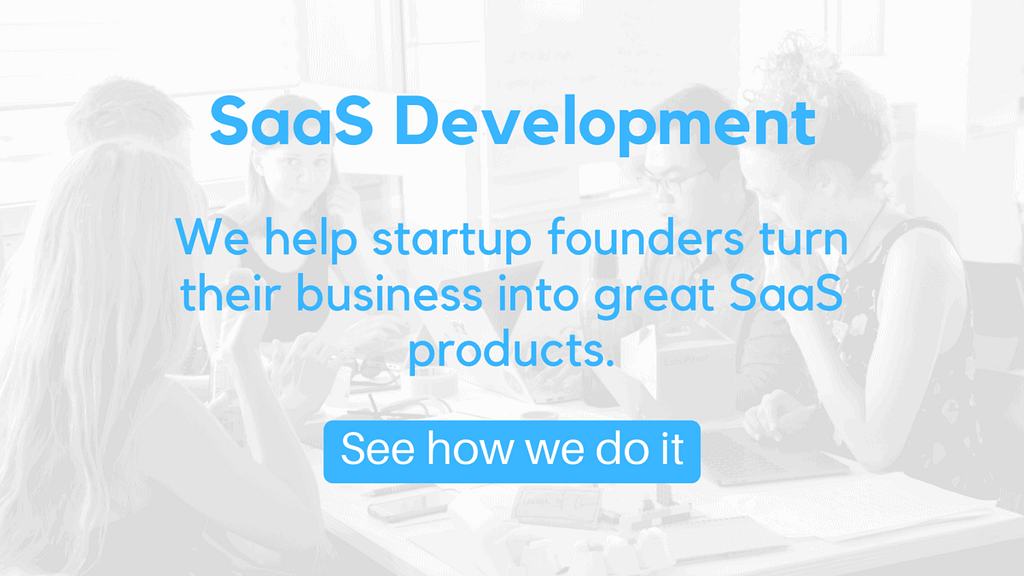A few weeks ago, I was asked a question about lean startups. Looking at the questions and answers I found on the web, I realized that it still needs some explaining. In this post, I will show, by example, how the lean approach works. The most important factor is that you improve on your value proposition and not on the way you build your final product.

Lean start-up is a way of creating new ventures that implement an incremental approach to your product and business development in almost every aspect (sales, marketing, features, target markets, etc.) in conditions of uncertainty. This means that instead of committing time, money, and effort to create a complex product based on your vision and some market research, you learn from your customers from the beginning, involving your target in shaping the product and defining the market.
Idea
Let’s say you are thinking about creating a start-up that delivers whole-day meal packages. The usual way to do it will be to order market research, prepare branding, define strategy, set up production, start marketing campaigns and sales. You have to consider a lot of things: allergies, food preferences, different places to deliver. It is complex, expensive, time-consuming and after doing everything right, you may find out that there’s no market for it.
Having in mind that only one in ten start-ups succeeds, people invented a way that helps to find the perfect market fit cheaper, faster, and with better customer engagement.
Read also: Why do you need innovation workshops
Build the product
Instead of setting up the whole business, you define a hypothesis and test it (e.g.: Corporate employees of age 30-50 will buy a subscription for whole-day meals packages delivered every morning).
Then you need to find a way to test this hypothesis. There are many ways of doing this. The important thing, though, is to measure it based on real users response. This is called validated learning. You may simply start by asking your friends in a target group “Would you like a whole-day meal set delivered to your doorstep”? Assuming you get a reasonable number of “yes”, you may try to validate it on the market.
Now it’s time to gather some more information. Say we set up a landing page where we offer a one day trial for free (you may try to experiment with a little trick like pay-by-tweet or pay-by-invite). We agree that it’s free provided that your customer agrees to give you feedback afterward. After delivering the product, you reach out to your customers with a survey.
Read also: Do not start making your app with an MVP!
Collect data
The lessons you learn depend on the data you gather so be sure that you define your measurements and define the key indicator that will be validating your hypothesis. I think in this case orders vs. unique users could be the key indicator. Here are some ideas on what kind of data you could gather so you can learn from this experiment:
- How much would a customer pay for a meal set?
- Why wouldn’t you like to become a customer?
- Why would you like to become a customer?
What you can learn from those early steps is that:
- you can’t find 100 people who will be interested in this,
- your customers are willing to pay less than it costs you to prepare and deliver meals,
- your customers are willing to pay three times the cost if the food is from local farms,
- women are more interested in your product than men,
- you need a vegan version from day one,
- you got 70% higher demand on a landing page saying that it’s BIO food from local producers and users are willing to pay for this twice as much as for non-bio food,
- leaving leaflets at the gym has better conversion than PPC campaigns.

Idea 2.0
Now, after spending a small part of time and money that you’d need to set up the whole business, you know your customer and market much better. You know what pricing you may offer, what motivates your customers to buy, what pushes them away. It’s time to reshape your idea, define your next “cycle”. What should it look like? It depends on your goals and the lessons you learned. Here are some ideas on what might happen next:
- You start gathering orders offering the product based on the feedback.
- You check if it’s better to deliver breakfasts and lunches at the office instead of whole-day meal sets.
- You pivot completely and check if there’s market for a bakery with deliveries instead.
After that… you take the same steps as before. Again and again and again – as this approach helps you not only launch a start-up but also develop your product according to users’ expectations.
Why bother?
- You take calculated risks rather than educated guesses – by spending as little as possible on your MVP and adjusting your concept to your customer expectations, you increase your chance of success.
- You engage customers with your brand early, acquire brand ambassadors – people who feel they helped you shape the service are the most loyal. If you nurture those relationships, you may find your early adopters turn into brand ambassadors.
- It’s repeatable and cheaper – instead of going all-in with your first idea, you may try several things and bet on the one with best market fitting.
Lean start-up is a way based on experience and best practice of implementing the strategy that follows 3 steps:

This is the way you can start successful ventures over and over again.
Where does this come from?
Lean startup evolved from concepts known in the production industry, mainly in Japan. Here are three that had a great impact on the way we think about start-ups now:
- Lean Manufacturing – a systematic method of eliminating waste in production Lean manufacturing,
- Kaizen – Japanese approach for continuous improvement Kaizen,
- Six Sigma – especially DMAIC process Six Sigma.
Care to learn more?
First, there’s a lot of articles about lean start-ups on the web. You may also start with a book – then I recommend: ”The Lean Startup: How Today’s Entrepreneurs Use Continuous Innovation to Create Radically Successful Businesses” by Eric Reis and “Zero to One: Notes on Startups, or How to Build the Future” by Peter Thiel.

